How To Get Fit Fast
There’s more than one way to improve your fitness – we’ll help you decide which one is right for you
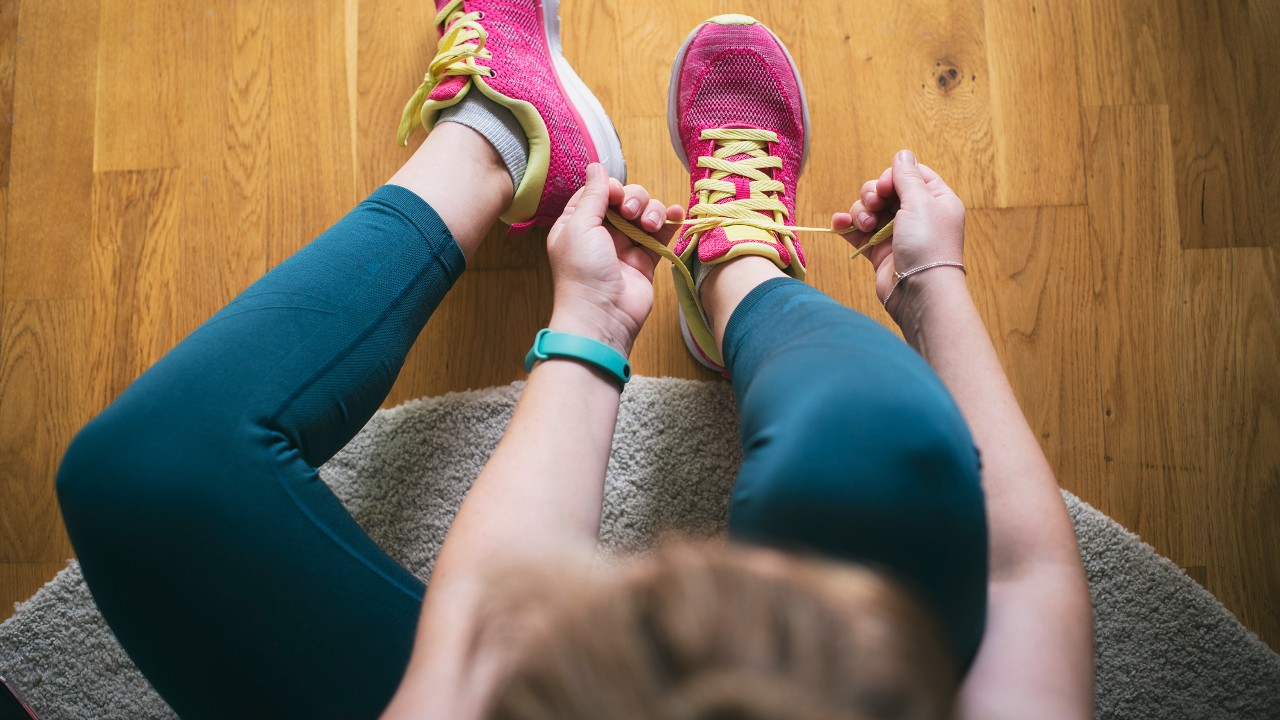
If you’ve started to notice that you get out of breath after one flight of stairs, it’s time to work on your fitness. The good news is that it won’t take that long to improve no matter what type of exercise you choose. Think a month or two, if not a few weeks, although of course some disciplines will help you improve faster than others. Some – shock horror – are also harder. They also range from being affordable for everyone to being a bit of a financial stretch for many.
To help you choose the right activity to get you fit, we went to experts in the most popular fields of sport and exercise to break down how their area helps people get fitter, how long before a beginner can expect to see results, and how much of a shock to the system it’s going to be at first.
We’ve got the lowdown on 14 activities below. Browse at your leisure or select a link from the list below to jump to that activity.
Bodyweight Training
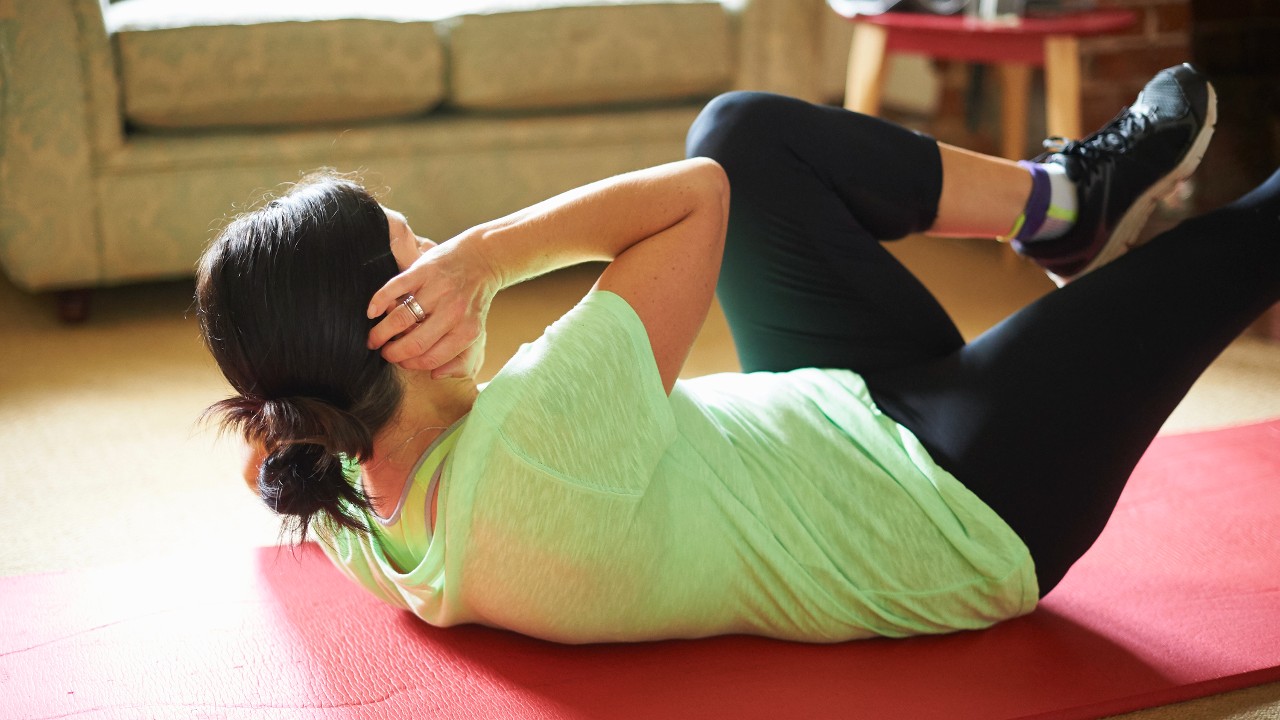
The cost: Potentially nothing, but a subscription with Freeletics costs from £2.54 a week
The expert: Seana Forbes, training specialist at fitness and nutrition app Freeletics
In what ways do you get fitter? Regular high-intensity bodyweight training will not only make you stronger and increase endurance, it also promotes mobility, co-ordination, stability and balance.
How hard will it be when you first start? It will probably be very tough, but it’s worth it because you will soon see progress.
Sign up for workout ideas, training advice, reviews of the latest gear and more.
How often should you do it as a beginner? If you’re aiming to maintain your current fitness level you will usually be able to get away with two sessions a week, as long as they are effective workouts. If you want to progress, aim for three sessions a week, and if you want to lose weight you may be looking at four.
However, if you’re a beginner it is important you don’t overwhelm your body. If you’re feeling tired or sore take a rest day. Learn what your body needs and find a routine that works for you.
How long will it take for you to notice improvement in your fitness? Usually, most users [of Freeletics] will start to see physical changes and progress after the first month or so of training if they also keep an eye on their nutrition.
Any other tips for beginners? Take the time to learn the exercises and their movements. Film yourself or ask someone to check your technique. If you are not doing the exercises properly, this can lead to pain or injury.
Bootcamps
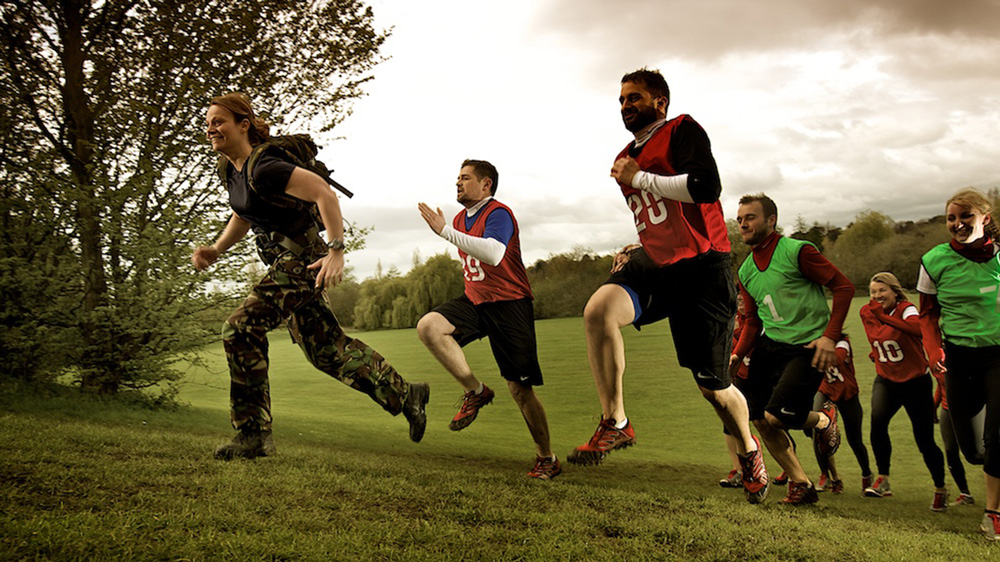
The cost: Memberships for Be Military Fit (BMF) cost from £25 to £54, with a free trial available.
The expert: Tommy Matthews, managing director of BMF
In what ways do you become fitter? BMF is a total-body training programme designed to hit all areas of fitness. Each class has a combination of five core components – physical preparation; strength; anaerobic capacity, speed and power; aerobic capacity; recovery – that ensure our members can achieve a wide variety of goals.
How hard will it be when you first start? Adapting to anything new is not easy and outdoor fitness training is no different. We usually find that it takes members around three to four weeks of training with BMF before they start to feel in tune with the training programme and can really start to push themselves. We use a fitness level progression system in each class so beginners can join and work at their own level.
How often should you do it as a beginner? At least once a week to notice any difference, but we’d advise them to start at two and look to progress to up to three to five sessions once they don’t need as much time to recover from each workout.
How long will it take for you to notice the improvement in your fitness? We usually see our members noticing differences after four weeks and then major body changes at around the three-month stage if they stick to the programme and look after their diet. Initially members start to feel fitter and able to do more. Their cardiovascular system improves as does their endurance.
Any tips for beginners? Turning up to that first session is a big hurdle to many people, but once you’re there and in the session you’ll be thankful you made the effort. The camaraderie is what makes it easy to come back again. The first tip for a beginner is, no matter what, make it to that first session and be prepared for the workout by dressing appropriately for the weather.
Boxing
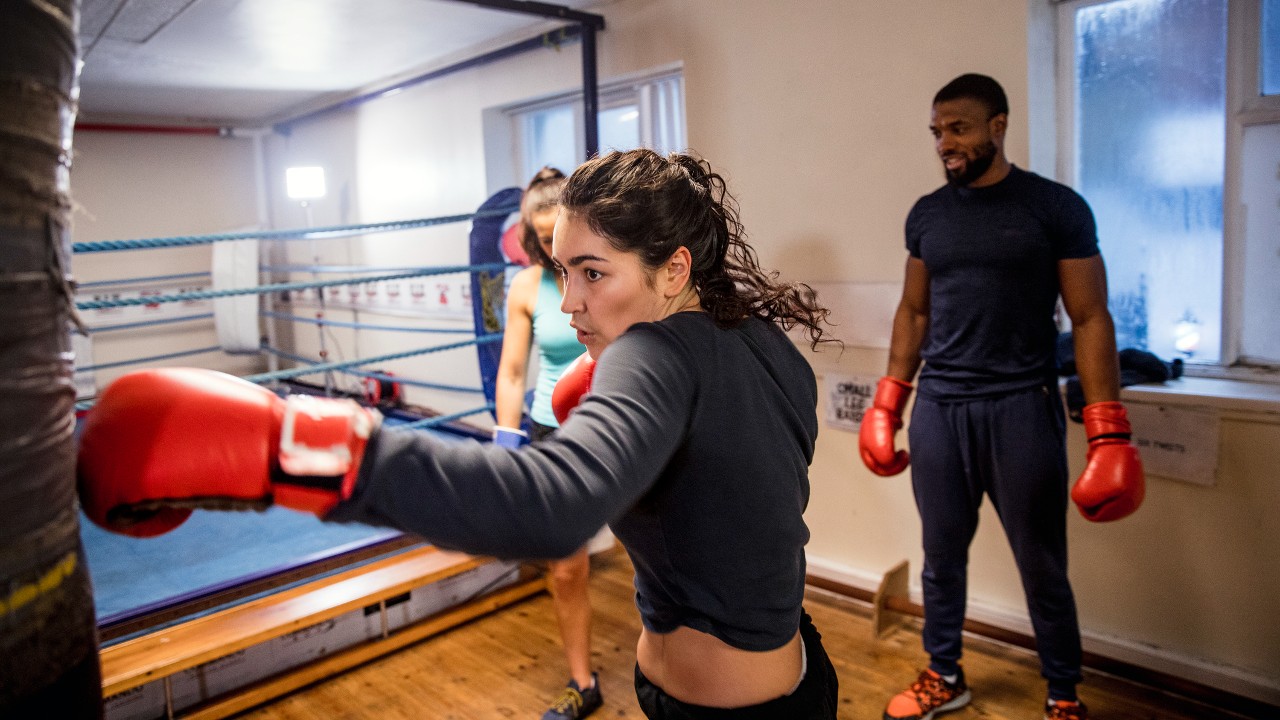
The cost: From £10 for some group sessions up to £100-plus for one-on-one training. Dedicated boxing gyms cost approximately £30-£50 a month.
The expert: Keith McNiven, founder of personal training company Right Path Fitness.
In what ways do you get fitter? You’ll improve your cardiovascular fitness and muscle strength. And it’s not just your arms that will feel the benefit. You’re twisting, you’re turning, you’re engaging your core and being quick on your feet. It all adds up to a really comprehensive training programme that will help you to get fit fast.
How hard will it be when you first start? I’m not going to lie – if you’ve never boxed before you’ll find it tough. But it’s also one of the most exhilarating exercises you can do because it challenges you in so many ways – agility, strength, balance, co-ordination and endurance.
How often should you do it as a beginner? If you do it right, boxing is a total-body workout. If it’s the only exercise you’re doing, then maybe start out with a couple of sessions a week and build up to three to four.
How long will it take for you to notice the improvement in your fitness? Assuming you’re eating right, you’re working every muscle group so you’ll start to see real improvements in your fitness within six weeks, specifically to your stamina, speed and strength. Boxing is also brilliant for mental agility and helping to relieve stress, and you’ll get that benefit straight away.
Any tips for beginners? You really need professional guidance, at least in the early stages to learn the correct techniques: how to punch, and how to protect and position yourself.
Non-Contact Boxing
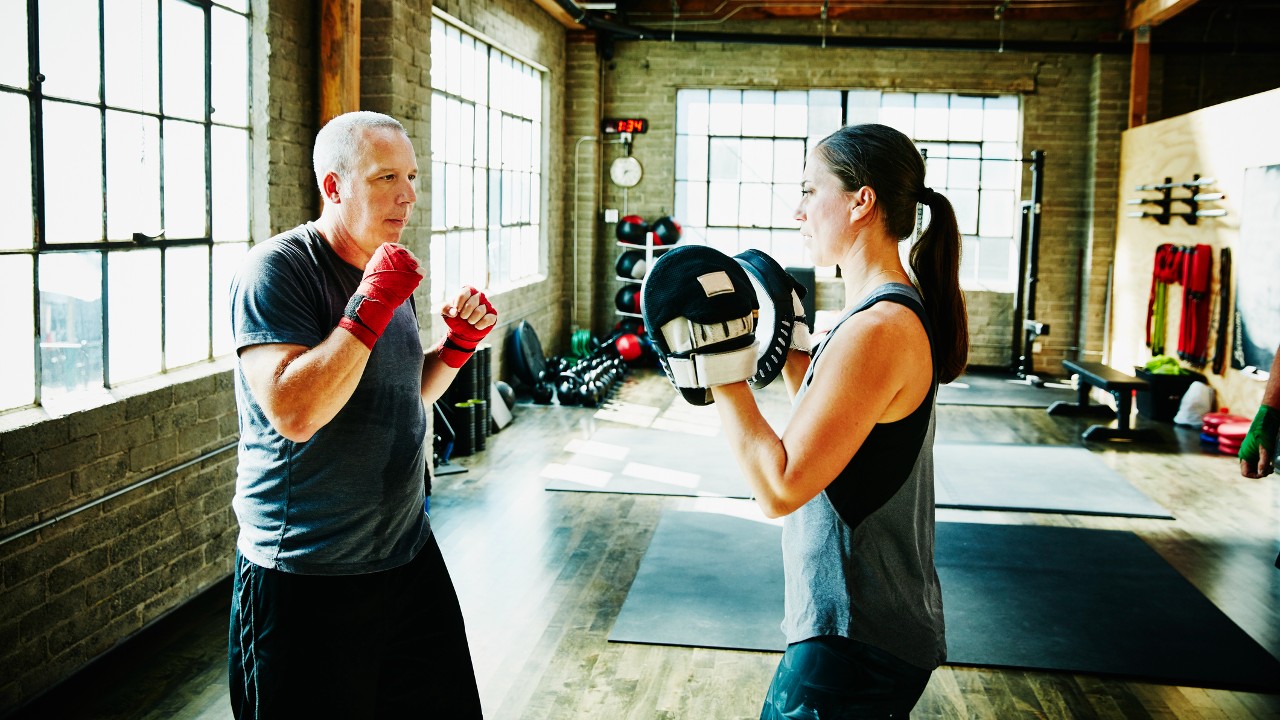
The cost From £5 per session
The expert Alex Matvienko, head professional boxing coach and co-owner of Elite Boxing
In what ways do you get fitter? Boxers are renowned for being some of the fittest athletes on the planet and that’s down to the mix of cardiovascular and strength training. Non-contact boxers and boxers alike practise the same movement patterns and resistance work. There are numerous ways your fitness will improve including your aerobic endurance – having the stamina to go longer – and anaerobic fitness – your ability to work at a high pace.
Resistance exercises and using equipment such as medicine balls, kettlebells, and slam balls increases bone density which helps to prevent conditions like osteoporosis. Your hand-eye co-ordination will improve as will your reaction time, and boxing has been shown to improve mental health through building confidence, helping you to become mentally stronger which helps in other areas of life.
How hard will it be when you first start? The hardest thing is turning up. Many people are worried about being punched, but that’s a misconception. How hard you’ll find the session depends on your level of fitness, lifestyle and diet although, that being said, even professional sports people struggle with the training initially. It’s demanding and trains the entire body so it’s likely to result in delayed onset muscle soreness (DOMS). Ideally you’ll be active between sessions and soaking in the tub with magnesium flakes to help recovery. Although the first session is the hardest, you’ll walk away happy and be back again – it’s addictive!
How often should you do it as a beginner? Boxing training is hard for anyone at the start and if you’re new or returning to exercise, there’s no doubt it’ll be physically and mentally challenging. Twice a week is ideal – regardless of general fitness – as it takes time for your body to adapt. If possible, leave two or three days between sessions to maximise recovery and be ready to go again.
How long will it take for you to notice improvement in your fitness? I’ve seen people improving after a week or two of training. It’s pretty much instant if you commit to the lifestyle around it – healthy eating and keeping active every day. Also, confidence comes with the second or third visit. Understanding what the sessions entail and how they’ll be delivered and knowing how to pace yourself translates into an improvement in movement patterns and endurance.
Any other tips for beginners? Make sure you’re comfortable doing the exercises – they shouldn’t be painful. If you’re not happy, speak to an instructor so that they can make sure you’re doing the exercises correctly. Poor form leads to injury, and instructors will do their best to ensure that doesn’t happen.
Invest in your own gloves – they can easily be found in a local sports shop. Clubs do have spare gloves, but they will have been well used. Wrist straps or bandages are a good investment, to support the impact from punching against a bag or pad.
Practise the bodyweight resistance work that you do in the session, like planks or press-ups, at home. You’ll get fitter quicker and feel more confident at the sessions.
Incorporate aerobic activity between sessions. Running or walk/run, cycling and the cross-trainer are all great workouts, and the fitter you are the more you’ll enjoy non-contact boxing training.
Relax and be confident. Remember that everyone there was a newbie once and it’s about the journey not the destination.
CrossFit
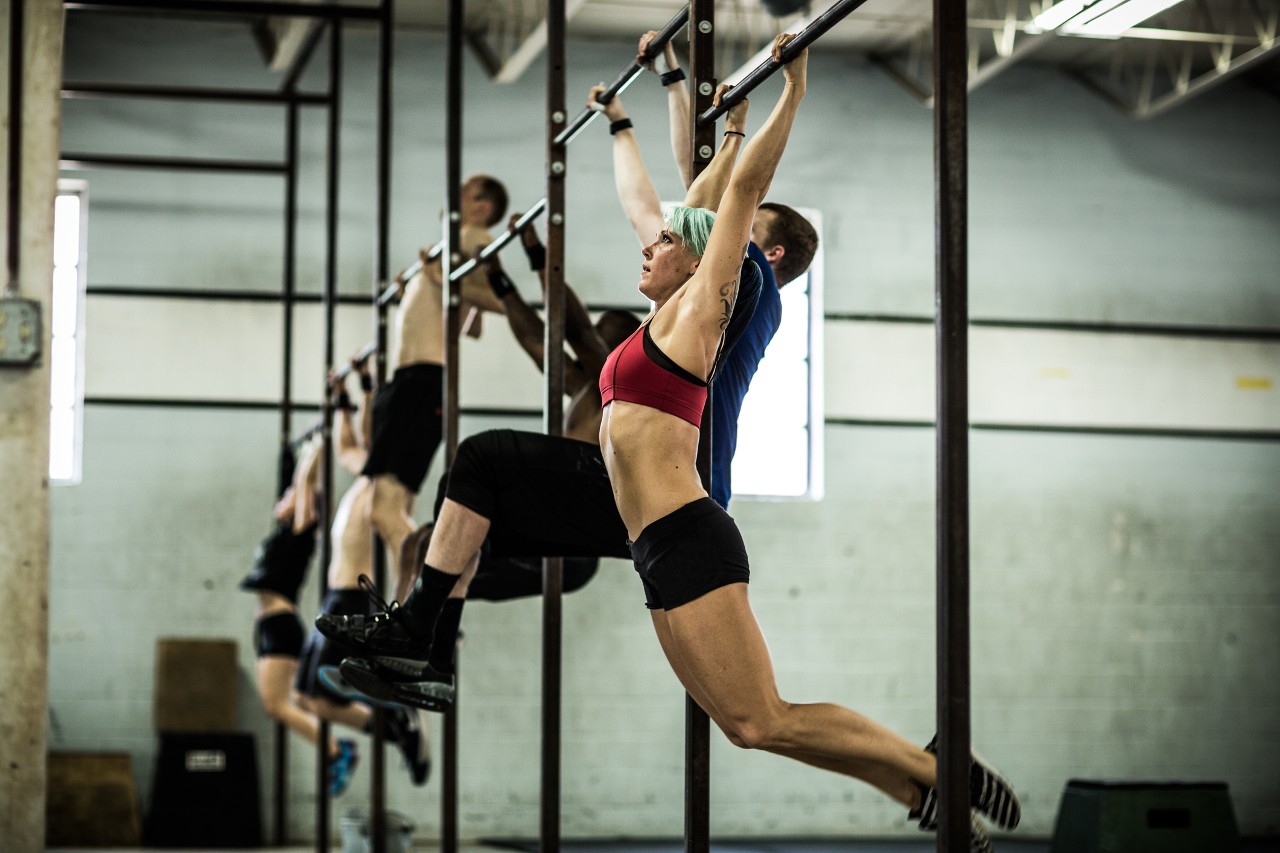
The cost: £10-£20 per class, or £75-£200 a month
The expert: Andrew Stemler, CrossFit trainer and founder of CrossFit London UK
In what ways do you get fitter with CrossFit?
In what ways do you get fitter with CrossFit? We start off with this basic definition of fitness: moving large loads long distances quickly. If there’s a zombie apocalypse and you need to run, the fitter person is the one who can stuff more stuff in their backpack, and run further and faster.
There are three energy systems in the body. The ATP system fuels the fast sprints. There’s the second system, the anaerobic system where you run pretty fast for about a minute. Then there’s the aerobic system, which is the walking and jogging stuff. We argue that to be generally fit, you have got to have competence in all three.
Then you can think about strength, cardiovascular capacity, localised muscular endurance, agility, balance, power. Once again, we still say you have to have balance – you’ve got to be able to do them all.
How hard will it be when you first start? The idea is to find where someone’s boundaries are, and to begin to push the boundaries a bit, but not too much. Take the overhead squat – holding a bar above your head and squatting. That can scale down to sitting on a bench and standing up a couple of times and that’s as hard for some people as it is for others to squat holding 40kg overhead.
How often should you do it as a beginner? A lot of people start at twice a week. Some people want to jump in and come every day and because it’s so varied, you can do that, but I think the most successful approach, as with most activities, is two to three times a week.
How long will it take for you to notice improvement in your fitness? You start getting improvements from practice pretty much straight away. If the first time you’ve ever done 10 squats was last week, next time the chances are you’re going to be able to do 12 or 15. On most strength regimes, your strength will go up in the first six weeks.
Any other tips? Pay attention to the technique and leave your ego at the door. We take people back to basics and there’s no reason why you’ll be able to do any of the things we’re going to ask you to do first time. Get the mechanics right, then become consistent, and only then go mad. Come in with a learning attitude and you’ll do absolutely fine.
Cycling
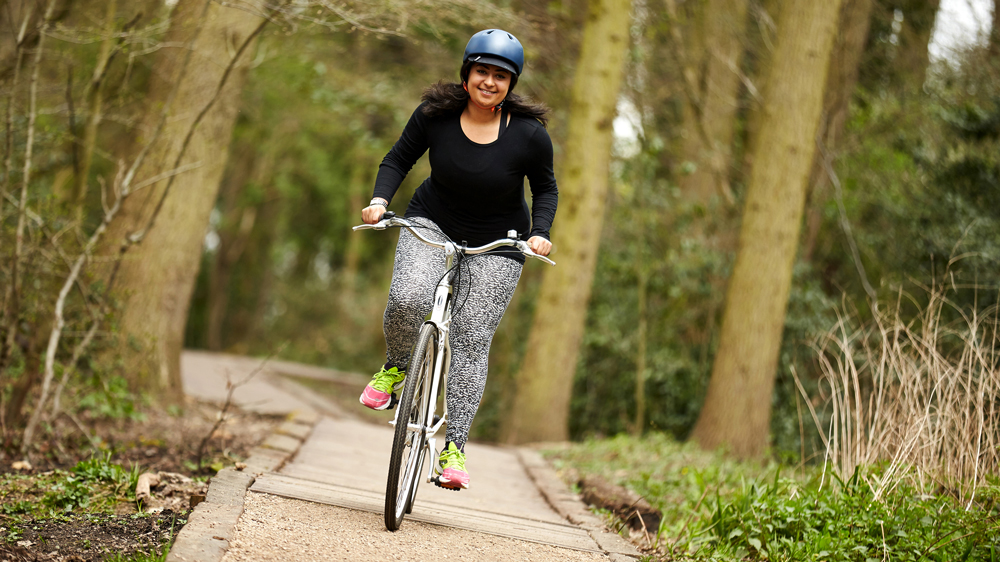
The cost: As a minimum you’ll need a bike, a lock and (although it’s not a legal requirement) a helmet. If you buy new expect to spend at least £400 for all three, though the Cycle to Work scheme could save you a bundle. If you go second-hand you should be able to pick up a good bike under £300, possibly as little as £100.
The expert: Phil Burt, former head physiotherapist at British Cycling and founder of Phil Burt Innovation.
In what ways do you become fitter? Eventually there will be a visible improvement in your legs, abdominals and upper body. However, the biggest development will be to your aerobic fitness.
How hard will it be when you first start? Unless you’re hopping on your bike having built up a solid fitness base from another sport, the chances are you’ll be reasonably unfit and it will be tough. Sitting on the bike for hours on end may also feel a bit more uncomfortable than it did when you were a kid.
How often should you do it as a beginner? It entirely depends on your goal and how much time you can dedicate. I would recommend starting at something you believe is doable and then do it again. If there are no problems then you should progress, but never increase the time or distance you cycle by more than 50% from one session to the next.
How long will it take for you to notice the improvement in your fitness? A crude rule of thumb is that it takes roughly four weeks to see the benefits of training. When it comes to cycling, regular short rides are more effective than long sporadic sessions. And it’s important that you balance training, recovery and regeneration.
Any tips for beginners? Make sure your riding position is working for you and not against you. It will improve your performance, enjoyment and prevent injuries. Whether it’s reading up on the subject and using size formulas or investing in a dynamic bike fit, make sure you do something to get your position right.
Football
The cost: The FA’s Just Play! programme costs 50p-£3.50
The expert: Andy Dyke, national participation manager at the FA
In what ways do you get fitter? Football can provide a great all-body workout. The constant walking, jogging and running helps to keep a player’s heart rate up, providing cardiovascular benefits, lowering body fat and helping to strengthen muscles.
How hard will it be when you first start? This will vary, but sessions are designed in such a way that you can dip in and out as your body allows. A change of position or a five-minute break can help provide the breather you might need.
How often should you do it as a beginner? The Just Play! programme is based on the ethos of “turn up and play”, meaning that you can attend as often as you like depending on your other commitments. Most sessions take place weekly, which provides the ideal template to ease yourself back into more regular exercise, but if you do feel like you’re moving too fast then you need not feel any guilt about missing the odd session along the way.
How long will it take for you to notice the improvement in your fitness? You should start to feel benefits straight away in terms of improvements to both your fitness and your skills on the pitch.
Any other tips for beginners? Don’t just focus on the fitness. The reason that football is so popular around the world is that it brings people so much enjoyment. Focus on simply enjoying the game and with it the opportunity to socialise and meet new people.
High-Intensity Interval Training (HIIT)
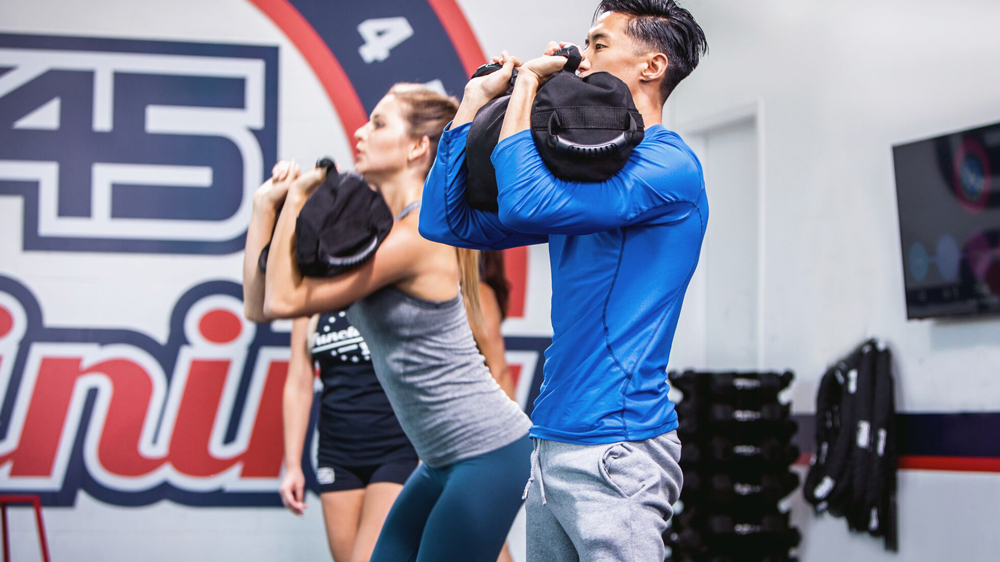
The cost: Group boutique classes cost in the region of £20
The expert: David Birtwistle, head trainer at F45 Shepherds Bush
In what ways do you get fitter? If you want to have more control of your body, lose some weight and feel more capable, then HIIT is a great way of doing that.
How hard will it be when you first start? Any new exercise is tough to begin with, but with the right trainer or trainers it will be manageable – and very beneficial.
How often should you do it as a beginner? Two to three workouts a week for the first few weeks. HIIT training can be incredibly challenging, so it is important that beginners give their bodies some time to adjust, heal and grow, which is just as important as the training itself.
How long will it take for you to notice the improvement in your fitness? A clear increase in fitness, stamina and perceived strength should all be very noticeable within a month of consistent HIIT training.
Any other tips for beginners? Once you've been going for a few weeks, make the effort to increase your energy during a workout. You get out what you put in – coasting will get you nowhere.
Nordic Walking
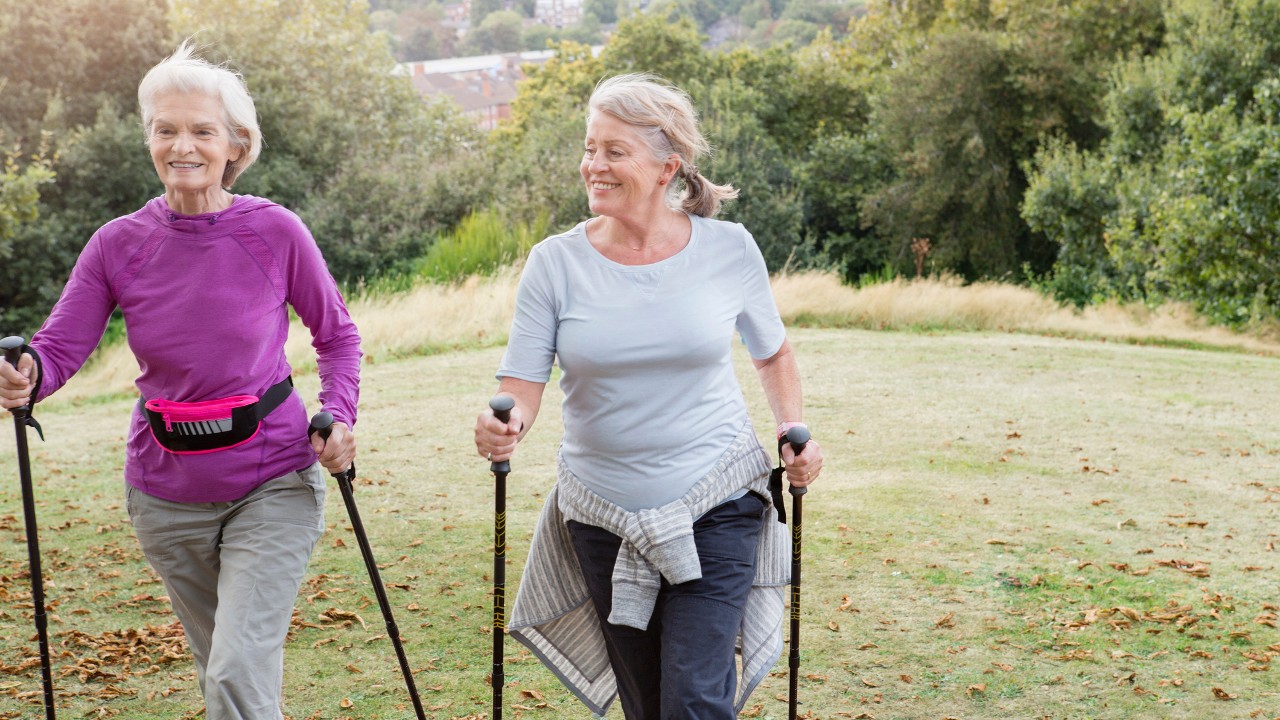
The cost The price of a set of classes to learn the technique will vary according to where you are (find out what’s available near you with the British Nordic Walking instructor directory), but subsequent group outings are usually inexpensive – community groups in some areas offer free sessions. If you get hooked you’ll need to buy a set of Nordic Walking poles (which are very different to hiking poles) which range from £75 to £145 according to the carbon content, as well as hiking gear: depending on the type of outing, this could extend to walking boots or hiking shoes, waterproof jacket and trousers, and a day pack.
The expert Gareth Davies, British Nordic Walking instructor
In what ways do you become fitter? Nordic Walking is a derivative of cross-country skiing and simultaneously builds cardio fitness, full-body strength, co-ordination and flexibility. It is an extremely accessible form of total-body exercise, making it ideal for weight management and developing physical fitness whatever your age or level of ability.
How hard will it be when you first start? Everybody masters the technique at their own rate, but because walking is simple and familiar, most grasp the skill quickly compared with other new activities. Having two poles can feel reassuring and empowering, reducing anxiety while accentuating a person’s natural walking gait to become so much more than just walking with sticks.
How often should you do it as a beginner? Once learnt, Nordic Walking is the perfect exercise for reaching the current NHS England minimum recommended exercise guidelines of 150 minutes’ steady exercise a week. Beginners would be guided by their instructor to build up to this target gradually over a number of weeks. In my experience, a typical pattern for a beginner with minimal fitness might be one to two 20- to 25-minute sessions a week.
How long will it take to notice the improvement in your fitness? From feedback, and the weight loss and increased physical performance I have witnessed, not very long at all – possibly only a few weeks. Nordic Walking’s advantages over other physical activities are a low perceived rate of exertion and a workload spread over the entire body. This means you are often physiologically working harder than you ever feel you are and rarely become stiff after a walk. Consequently, you can enjoy more frequent exercise with minimal risk of injury and the reward of significant health benefits.
Any tips for beginners? Learn from a qualified and experienced British Nordic Walking instructor. There are around 300 in the UK and they all teach using the same International Nordic Walking Federation (INWA) 10-Step Teaching Method.
Try to remember: good technique is about the quality of the individual stroke, which is repeated thousands of times on a walk. The better it is, the quicker you reap the full health and fitness benefits of this amazingly simple but highly effective form of exercise.
Running
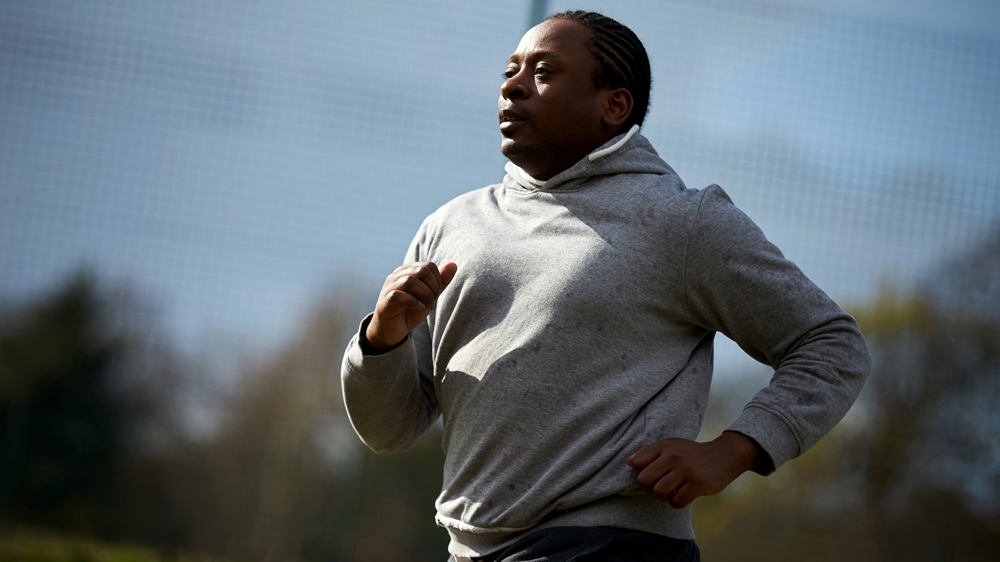
The cost: As a minimum, spend £30 on a pair of running shoes, but newer models go for between £100-£130.
The expert: Running coach Andy Hobdell
In what ways do you get fitter? You become more aerobically fit – that’s your body’s ability to transport and use oxygen [giving you better stamina] – and by running you are strengthening your body.
How hard will it be when you first start? If you’re starting out or getting back into exercise after a break it will feel strange to begin with. The most difficult part is being sensible. Many people start out covering too much distance or running too fast, or a combination of the two. They won’t want to do it again because it felt so hard.
How often should you do it as a beginner? Start by running for just ten minutes and break this up into jogging or running for 60 seconds and walking for 30 seconds. As things become easier, increase this to two minutes, then three minutes, until after a week or two you are running for the whole ten minutes.
How long will it take for you to notice improvement in your fitness? Aim to run every other day, so three times in one week and four times the next. If you feel like you need to take an extra day’s recovery then take one.
Any other tips for beginners? You can see a noticeable progression in two to three weeks. If on day one you complete your first run and then by the end of week three you’re running up to 20 minutes without a break, that’s excellent progress.
Make sure you have some properly fitted trainers. There is nothing worse than running in the wrong trainers, which can cause injuries.
Seek out a local running club [typically memberships cost £30-£60 a year]. There is nothing better than combining training and socialising. Many running clubs today have a wide variety of levels of runner so that there is always someone for you to run with.
RECOMMENDED: An 8-Week Couch To 5K Training Plan For Beginners
Spinning
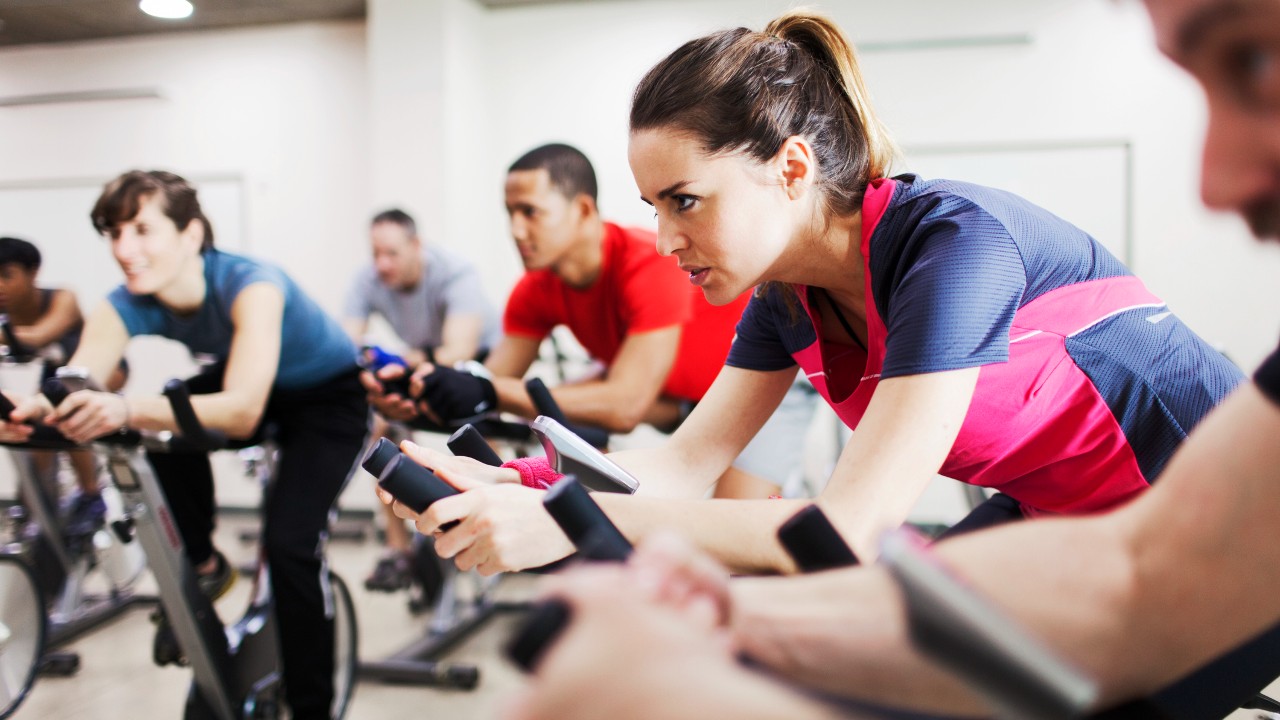
The cost: Sessions at boutique studios costs around £20, though the cost per class drops considerably if you buy in bulk. Obviously, group exercise classes are one of the hardest to keep running during the pandemic and it’s not like you can move spinning bikes outside easily. There are plenty of home spinning bikes available, however, with prices ranging from £200 to £2,000. Online spin workouts can be found for free on YouTube, or you can sign up to a subscription app which can cost up to £40 a month.
The expert: Natalie Walker, head of the Ride class at Psycle
In what ways do you become fitter? Ride classes at Psycle focus on anaerobic capacity and endurance, but they also improve power and muscular strength.
How hard will it be when you first start? You’re in control of how hard it is because you’re in control of your pace. If you need a break you can sit down or back off the resistance, so it’s easy to work your way up at a pace that works for you.
How often should you do it as a beginner? To lay the foundations and develop some muscle memory, two to three times a week is recommended, but the best advice is to listen to your body.
How long will it take for you to notice the improvement in your fitness? Riders committing to three or more classes a week will see noticeable improvements in their fitness within a month. Because we are always varying the intensity, we’re able to work through all the energy systems to boost fitness quickly.
Any other tips for beginners? Getting to know the positions on the bike and learning how to ride in rhythm are the main priorities so that you can get the most out of the workout. This can take a few classes to nail but once you're in time with the room, you’ll fly.
Swimming
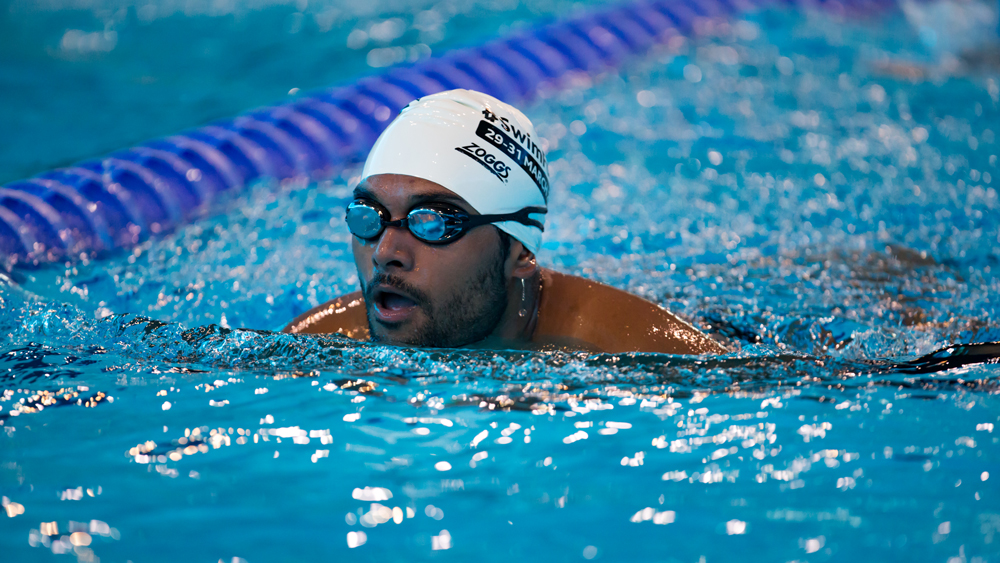
The cost: A few quid at your local pool, or free in the sea.
The expert: Jolyon Finck, Team GB swimming coach and ambassador for charity swimming challenge Swimathon.
In what ways do you become fitter? The most significant fitness gain you get from swimming is cardiovascular. By using your whole body to propel yourself through the water you develop cardiovascular endurance. Once you’ve refined your technique it can also lead to strength gains and you can develop your flexibility. And if your intent is to change your body composition you can do that as well.
How hard will it be when you first start? Swimming can be difficult, particularly if there’s a fear factor involved around being in the water. What I would suggest is to slowly increase time in the water to make that easier. In terms of the physiology it depends on the competence people have coming into it – have they been through a learn-to-swim programme and developed the skills as a young person? And have they engaged with swimming throughout their life? If you’re a complete beginner then a slow and steady approach is needed.
If you’re a complete beginner is getting lessons worthwhile? Definitely. Any kind of technical advancement will make swimming easier. There is also an enormous volume of useful resources online.
How often should you do it as a beginner? If you take on the Swimathon training programmes, they recommend an incremental development. One session in the first week, then if that goes well, two sessions in the second week, three in the third week, and then potentially cap it at three a week for a period of time. That depends on your objective. If your intention is to build up to, say, the Swimathon 5K then you might need a little more than that, but if your objective is just to get in to swimming and enjoy it then one to three times a week will give you the opportunity to develop your competence and your confidence in the water.
How long will it take for you to notice the improvement in your fitness? The guys who go to the Olympics, who’ve been training for maybe 10 years, when they have a break after a competition that might be one month off. Then it generally takes about a month to get their fitness back up. So if you consider that at the absolute expert level one month is enough to see a physiological difference, then at a beginner level I’d say one month is a pretty good time period after which to consider how it’s going.
Any other tips for beginners? The essential equipment is a swimsuit that’s comfortable. A good pair of goggles, because chlorinated water can irritate the eyes. A swimming cap – most recreational facilities require that people wear a swimming cap to keep hair out of the filters. And a good towel! There’s nothing better than jumping out of a tough swimming session and wrapping up in a nice, fluffy towel. Also a drink bottle. You do sweat in the water when working hard, so there is a need to get that fluid back in. Many people don’t notice they’re sweating when in the pool because they’re surrounded by water.
Which Swimathon distance should you aim for if you’re new to swimming? If you’re an absolute beginner then the shorter distances or maybe the relay would be most appropriate.
Tennis
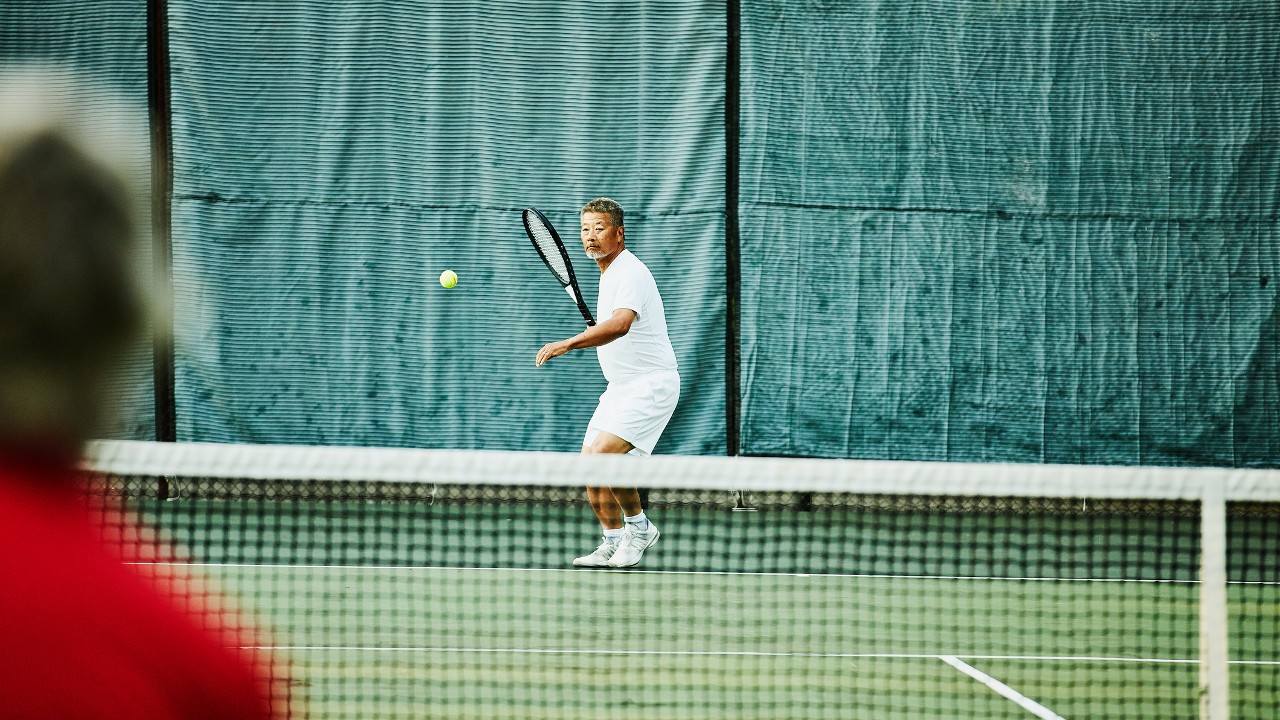
The cost: A few quid to hire a court, or join Local Tennis Leagues for £18 a season of five to eight games
The expert: Matt Smith, LTA coach development and learning manager
In what ways do you become fitter? Tennis is an incredible sport for improving your overall health and fitness. You can burn up to 800 calories an hour in a match of singles and tennis is a full-body workout, working the strongest muscle groups, the legs, the most, while also training the core and upper body. Plus, the short bursts combined with the recovery time between points are a great example of interval training.
How hard will it be when you first start? When you consistently play outdoors, especially now in the colder weather, you can also increase your resting metabolism.
If you’re a complete beginner is it worth getting lessons? Tennis also comes with a huge mental and wellbeing boost. You’re releasing endorphins while exercising, plus spending time with your friends and socialising while doing it, whether in doubles, singles or a cardio tennis class.
How hard will it be when you first start? It’s easier to start than people often think. Everyone can play, no matter their age, physical ability or background.
Start in a small space – you don’t even need a net – and take it in turns with a partner to get your first small rally. Progress into the service boxes over a net and then mid-court, and finally to the baseline – but there’s no rush.
It will help if you use low-compression balls which are easier to control. They come in red, orange or green (lowest to highest compression).
If you’re a complete beginner is it worth getting lessons? Lessons to pick up the basics are definitely worthwhile to get you to a point where you can serve, rally and score as soon as possible. This is where it gets fun and it doesn’t take long for people to get to a level where they can play in the park socially.
Make sure you select a LTA accredited coach: they’ll be qualified, know first aid, have undergone a Disclosure and Barring Service (DBS) check and know safeguarding procedure. Find a local coach using the LTA listings.
Beginner courses for adults, such as Tennis Xpress, or LTA Youth for juniors are a great way to learn the basics and play with others at a similar level.
How often should you do it as a beginner? Ideally twice a week. One lesson a week and a session to practise what you have learnt. This will see you make the quickest improvements so you can take your friends down on court.
How long will it take for you to notice the improvement in your fitness? Coupled with a healthy nutritious diet, you should start to see your fitness increase after your first session. Play regularly and the series of short sprints in the game will become easier and you will become less out of breath between rallies.
Any other tips for beginners? Don’t worry too much about grip and technique at first – just get playing. Always try to start the rally with an overarm stroke, a serve or an overarm throw – this is the way you will start a point when you play a game so it’s best to practise this as much as possible.
RECOMMENDED: The Best Tennis Rackets For Beginners
Weight Training
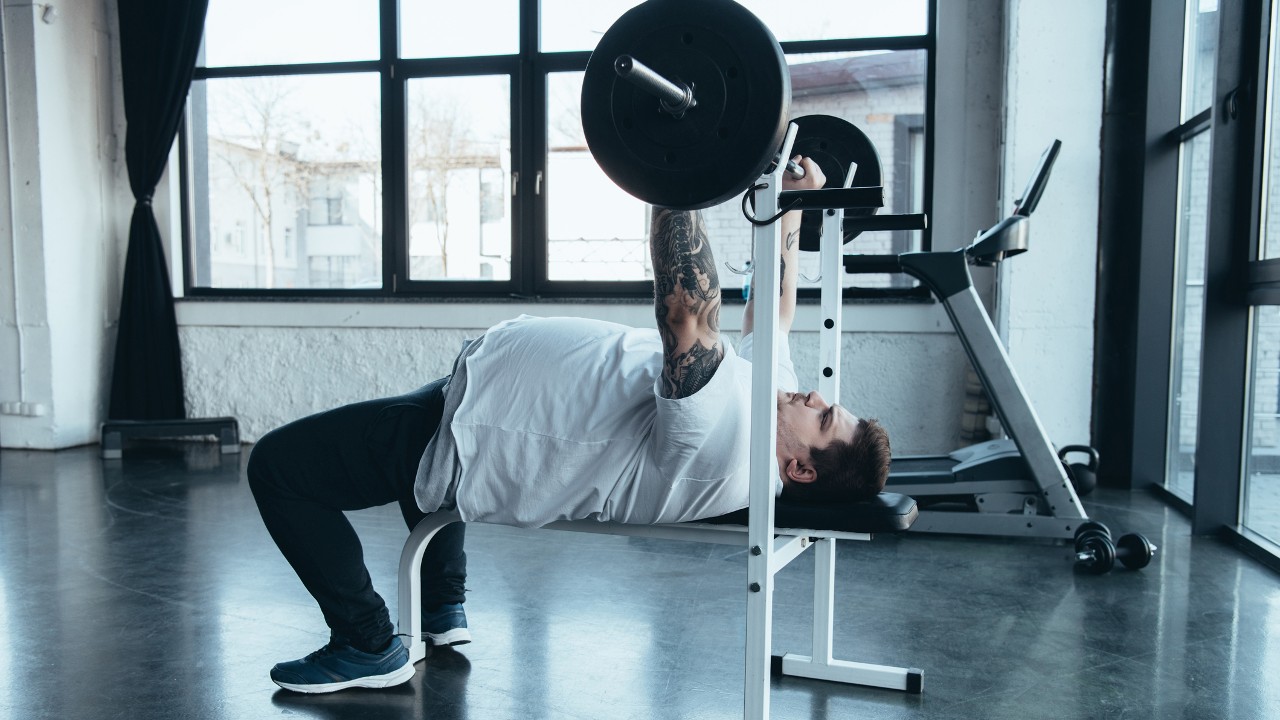
The cost: Personal training sessions lead to the biggest improvement in the shortest time. Expect to pay £30-£65 per one-on-one session.
The expert: David Jordan, director and PT at The Fitting Rooms
In what ways do you become fitter? This depends on how you train but weight training can improve aerobic fitness [for endurance], anaerobic fitness [for sprinting], strength, muscular endurance, hypertrophy (muscle gain) and fat loss.
How hard will it be when you first start? It can be challenging and frustrating at first. People tend to feel a lactic acid build-up in their muscles like they’ve never experienced, and they also have movement patterns and techniques to learn. To make the best long-term progress, stay patient at the beginning, then push hard later on.
How often should you do it as a beginner? Since there is so much to learn, frequent training in the large movements is vital. Three sessions a week focusing on a full-body approach each session is ideal.
How long will it take for you to notice the improvement in your fitness? As a general rule, after the first week – despite little improvement in actual measurable strength – your body starts to feel stronger. After the first month there are measurable improvements in strength and anaerobic fitness. After three months – if diet is also addressed – there’s a measurable improvement in body composition.
Any other tips for beginners? Be patient. Laying the correct foundation of techniques will ensure the best long-term results. After that be consistent and smart with your workout programming, train regularly and record everything to ensure you continue to make progress.
Zumba
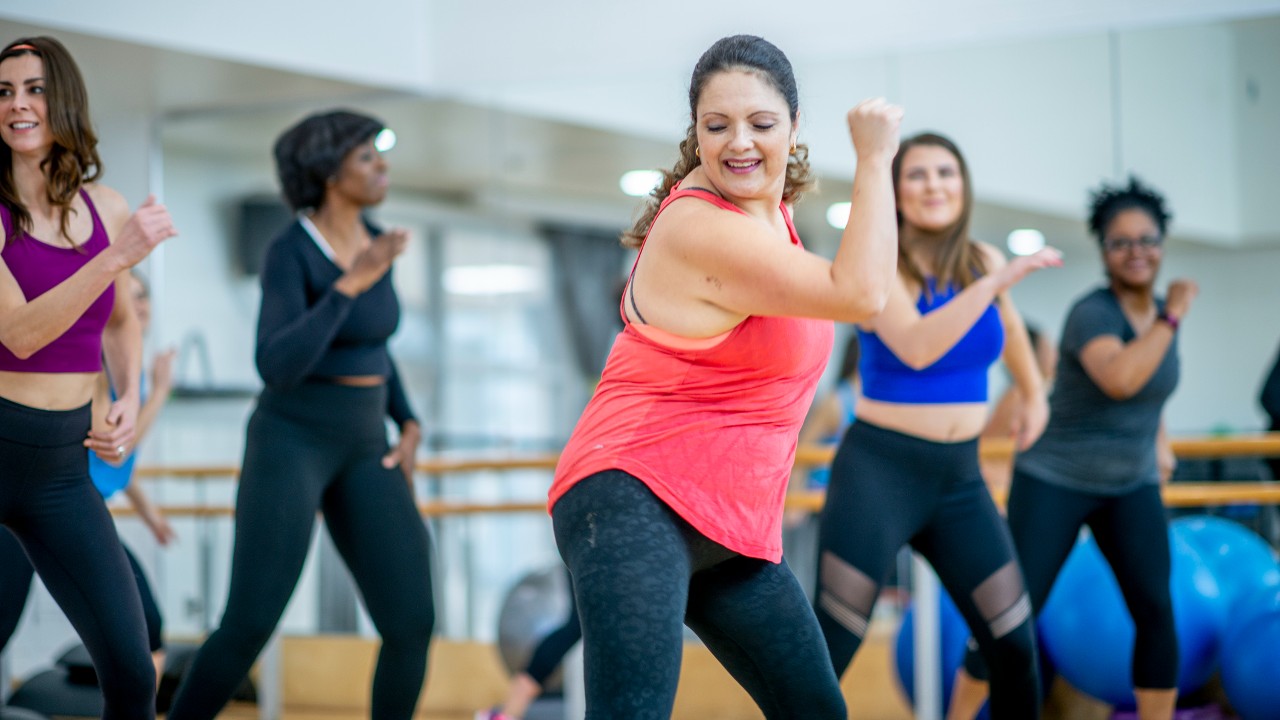
The cost: Virtual classes from £3, live classes from £5
The expert: Sandra Harnes, Zumba education specialist
In what ways do you get fitter? It’s an all-over workout for cardio, muscular endurance and strength, and flexibility. A Zumba class is an intermittent training session, with different levels of intensity and active recovery in between. We use a lot of Latin and international dance movements and they all come from the core, plus we mix in staple fitness movements like squats and lunges. We have this move called the Salsa side to side, where you go out and in and out and in. As we progress that move in a class, you lower into a squat then come back in, but you still feel like you’re dancing.
I would say the most important fitness element is mental health. You come in, you’ve had a hard day at work – you get to dance and let it all out. If you ask anyone why they love the class, it’s because it makes them feel good.
How hard will it be when you first start? If people have never taken a dance fitness class before, their first thought is often, “I can’t dance. I can’t do this” but the movements are so simple. If you can shimmy from side to side, or shoogle as we say in Scotland, you can absolutely do a Zumba class. There is no right or wrong – it’s about doing easy movements in a way that’s right for you and that you enjoy.
No-one comes to Zumba for bootcamp. It is high-energy and high-intensity in parts, but the music always always carries you. You never feel like you’re working hard.
How often should you do it as a beginner? If you want to see a difference in your physical health, you want to be hitting between one and three classes a week. The great thing is we’ve taken a lot of what we do virtual so it’s much easier to access a class. You can take a class with hundreds of instructors from all over the world through zumba.dance.
How long will it take for you to notice an improvement in your fitness? You won’t see a very obvious difference in your body shape or your weight in a week, of course, but there are unseen benefits in terms of feeling better, lowering your blood pressure, even the beginnings of improving your cardiovascular health as well. For people who want to see differences, as a very general statement, four to six weeks of one to three classes a week.
Any other tips for beginners? Go to the Zumba page on YouTube and try my basics step tutorial.
Take a virtual class at zumba.dance from the comfort of your own home with no eyes on you. Get your confidence up a little bit then walk into a live class, because Zumba is about that live connection.

Nick Harris-Fry is a journalist who has been covering health and fitness since 2015. Nick is an avid runner, covering 70-110km a week, which gives him ample opportunity to test a wide range of running shoes and running gear. He is also the chief tester for fitness trackers and running watches, treadmills and exercise bikes, and workout headphones.
- Jonathan ShannonFormer editor
- Anna GardinerContributor
